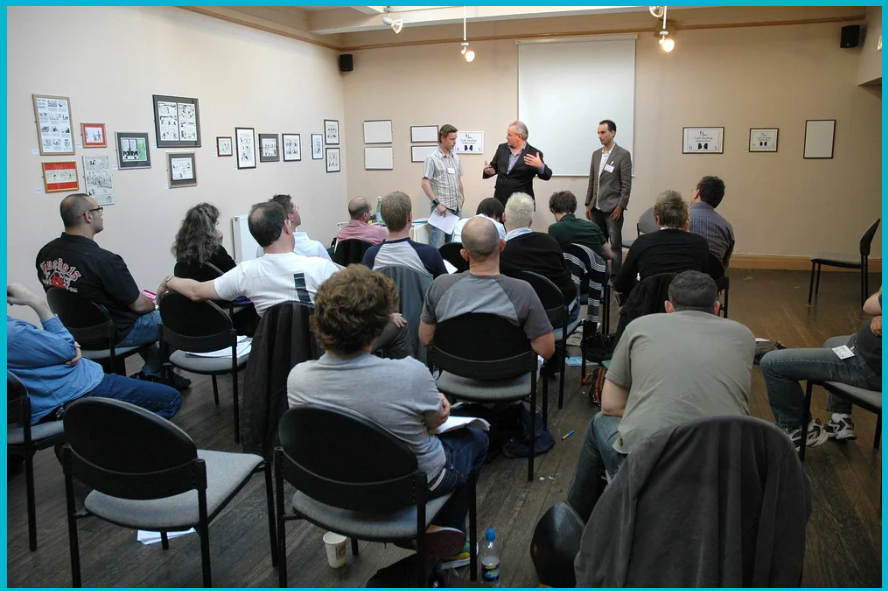Team Building Activities: Strengthening Teams and Boosting Success
Team Building Activities: Strengthening Teams and Boosting Success
In today’s competitive business world, success depends on more than individual talent. It depends on how well teams communicate, collaborate, and problem-solve together. That’s where team building activities come in. These activities are more than just fun games they are strategic tools that foster trust, break down barriers, and create stronger, more cohesive teams.
Whether you manage a small business, lead a large corporate department, or run a start-up, carefully chosen team building activities can dramatically improve performance and morale.
Why Team Building Activities Matter
Strong teams don’t just happen by chance. They’re built through shared experiences, open communication, and a sense of connection. Well-designed team building activities provide these benefits:
Improved communication. Fun, structured activities encourage open dialogue and better listening.
Enhanced trust. Overcoming challenges together builds confidence in one another.
Boosted morale. Stepping outside routine tasks and enjoying engaging activities lifts team spirit.
Problem-solving skills. Many team building activities require creative thinking under pressure.
Ultimately, these activities create stronger, happier teams that drive better results.
Popular Types of Team Building Activities
When choosing team building activities, it’s important to match them to your team’s size, culture, and goals. Here are some popular options:
1. Problem-Solving Challenges
Escape rooms, puzzle-solving sessions, or scavenger hunts encourage collaboration and quick thinking. These team building activities reveal leadership skills and highlight how people work under pressure.
2. Outdoor Adventures
Obstacle courses, hiking, or survival challenges push teams outside their comfort zones. These activities promote resilience, reliance on each other, and a sense of shared achievement.
3. Communication Games
Activities like storytelling circles, role-playing, or “Two Truths and a Lie” are simple yet powerful. These team building activities improve interpersonal connections and remind people of the importance of clarity and empathy.
4. Creative Workshops
Cooking classes, art projects, or music sessions allow teams to explore creativity together. They encourage innovation and cooperation in a relaxed environment.
5. Professional Development Activities
Workshops on leadership, negotiation, or strategy combine learning with bonding. These team building activities not only strengthen teams but also add business value.
Choosing the Right Team Building Activities
Not every activity will work for every team. To get the best results from team building activities, consider these questions:
What’s the goal? Is your aim to improve communication, resolve conflicts, or simply have fun?
What’s the team dynamic? Introverted teams may prefer problem-solving games over high-energy outdoor challenges.
What’s the budget? Team building activities range from low-cost in-office games to full-scale retreats.
What’s the timing? Short activities fit into meetings, while bigger challenges may need dedicated days.
By tailoring activities to your needs, you ensure maximum impact.
Benefits of Regular Team Building Activities
While one-off events are useful, the biggest gains come when team building activities are part of ongoing company culture. Regular activities:
Build long-term trust among colleagues.
Keep morale consistently high.
Reduce conflict by strengthening personal connections.
Improve collaboration across projects and departments.
In short, regular team building activities act as maintenance for team health and performance.
Real-Life Examples of Success
A tech start-up struggling with silos introduced monthly team building activities focused on problem-solving. Within six months, project delivery times improved by 25%.
A creative agency implemented weekly communication-based games. Staff reported higher job satisfaction, and client feedback scores rose significantly.
These examples highlight how strategic team building activities create measurable business benefits.
Mistakes to Avoid with Team Building Activities
Not all team building efforts succeed. Here are some common mistakes:
No clear purpose. Activities without goals risk feeling like a waste of time.
Excluding people. A ropes course may excite some but alienate others. Choose inclusively.
Too corporate. If activities feel like another meeting, employees won’t engage.
Skipping reflection. Without discussion afterward, lessons don’t stick.
Avoid these pitfalls to get the most from your team building activities.
Tips for Running Successful Team Building Activities
To maximise results:
Set expectations. Explain why the activity matters and how it benefits the team.
Encourage inclusivity. Design activities that everyone can enjoy.
Blend fun with reflection. Let teams enjoy the process but also discuss what they learned.
Gather feedback. Ask for input to refine future team building activities.
With thoughtful planning, these sessions become powerful growth opportunities.
The modern workplace thrives on collaboration, creativity, and trust. Team building activities are one of the most effective ways to nurture these qualities. By bringing people together, encouraging problem-solving, and boosting morale, they create teams that are happier, stronger, and more productive.
Whether you choose an escape room, a creative workshop, or a simple communication game, the key is aligning activities with your team’s needs and goals.
Investing in team building activities isn’t just about fun. It’s about creating a culture where people work better together and that’s an investment every business can afford to make.





